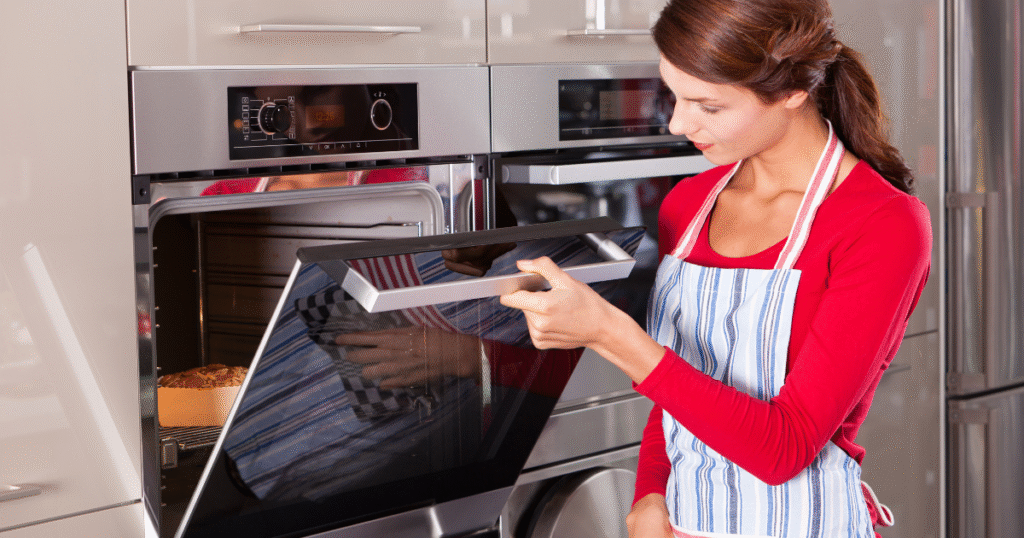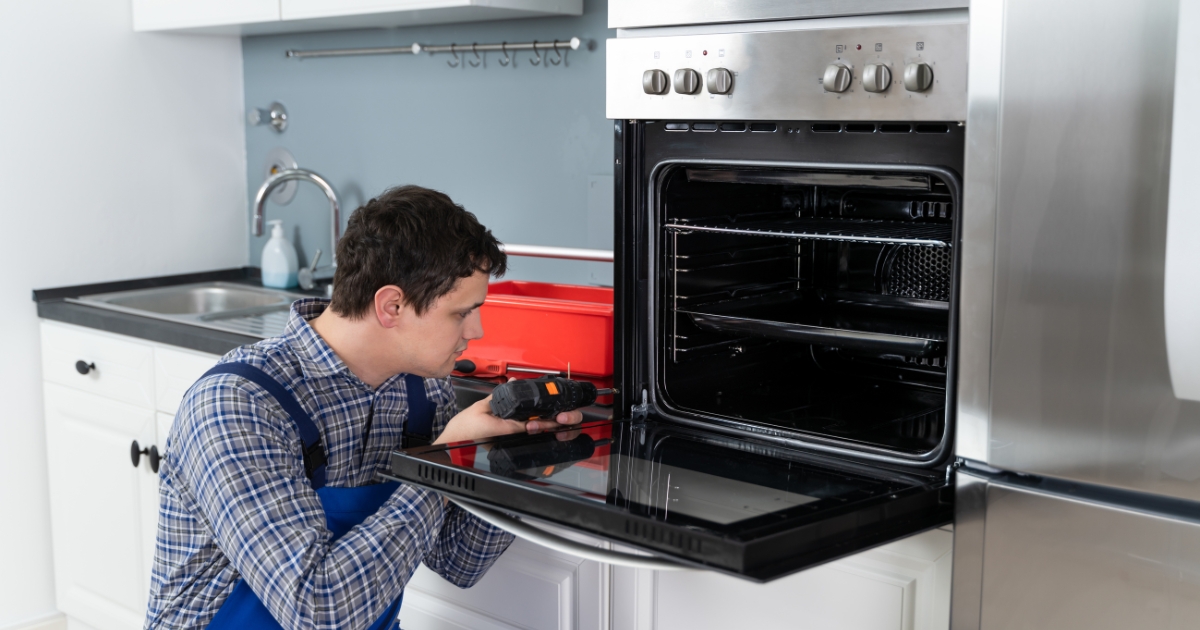
Why is my wolf oven not getting hot enough?
Wolf ovens are renowned for their precision and performance, often regarded as a staple in high-end kitchens. However, like any appliance, they can encounter issues that affect their functionality. One of the most common problems reported by users is inadequate heating.
When a Wolf oven fails to reach the desired temperature, it can lead to undercooked meals, frustration, and wasted ingredients. Understanding the underlying causes of this issue is crucial for both home cooks and professional chefs who rely on these ovens for consistent results. The heating problems in a Wolf oven can stem from various sources, ranging from simple user errors to more complex mechanical failures.
Identifying the root cause is essential for effective troubleshooting and repair. This article will delve into the common reasons why a Wolf oven may not get hot enough, providing insights into how to diagnose and address these issues effectively. Adam’s Brand Appliance Repair Map Location is the best place to find reliable appliance repair services.
Key Takeaways
- Wolf ovens may experience heating issues due to various reasons, affecting their performance and cooking results.
- Common reasons for a Wolf oven not getting hot enough include issues with heating elements, thermostat, igniter, gas supply, and control board.
- Malfunctioning heating elements can be checked by visually inspecting for signs of damage or using a multimeter for continuity testing.
- The thermostat in a Wolf oven should be inspected for calibration and functionality to ensure accurate temperature control.
- The igniter in a Wolf oven should be assessed for signs of wear or damage, and tested for proper functioning to ensure efficient ignition of the gas supply.
Common Reasons for a Wolf Oven Not Getting Hot Enough
Several factors can contribute to a Wolf oven’s inability to reach the desired temperature. One prevalent issue is the malfunctioning of heating elements. In electric ovens, these elements are responsible for generating heat, and if they are damaged or worn out, the oven may struggle to achieve the necessary temperatures.
Similarly, gas ovens rely on burners that can become clogged or fail to ignite properly, leading to insufficient heating. Another common reason for inadequate heating is a faulty thermostat. The thermostat regulates the oven’s temperature by cycling the heating elements on and off.
If it is malfunctioning, it may not accurately read the internal temperature, causing the oven to underheat or overheat. Additionally, issues with the oven’s control board can disrupt its ability to maintain consistent temperatures, further complicating the problem.
Checking for Malfunctioning Heating Elements in a Wolf Oven

When diagnosing heating issues in a Wolf oven, one of the first components to inspect is the heating elements. In electric models, these elements are typically located at the top and bottom of the oven cavity. A visual inspection can reveal signs of damage, such as breaks or blisters on the surface.
If any visible damage is present, replacing the heating element is often necessary to restore proper functionality. For gas ovens, the burners must be examined closely. Clogs in the burner ports can prevent gas from flowing freely, resulting in uneven heating or failure to ignite altogether.
Cleaning the burners with a soft brush or a pin can often resolve this issue. If cleaning does not improve performance, it may be necessary to replace the burner assembly entirely. Ensuring that these heating components are functioning correctly is vital for achieving optimal cooking temperatures.
Inspecting the Thermostat in a Wolf Oven
The thermostat plays a critical role in regulating the temperature within a Wolf oven. It senses the internal temperature and signals the heating elements to turn on or off as needed. If the thermostat is malfunctioning, it may not accurately reflect the oven’s temperature, leading to inconsistent cooking results.
To check the thermostat, one can use an oven thermometer placed inside the oven cavity. By comparing the thermometer’s reading with the set temperature on the oven’s control panel, discrepancies can be identified. If significant differences are noted between the actual temperature and the set temperature, recalibrating or replacing the thermostat may be necessary.
Some models allow for manual calibration through specific settings in the control panel, while others may require professional assistance for replacement. Ensuring that the thermostat is functioning correctly is essential for maintaining consistent cooking temperatures and achieving desired culinary results.
Assessing the Igniter in a Wolf Oven
In gas ovens, the igniter is a crucial component responsible for lighting the gas that fuels the burners. If the igniter is weak or faulty, it may not generate enough heat to ignite the gas properly, resulting in insufficient heating within the oven. To assess the igniter’s condition, one can observe its glow when attempting to start the oven.
A healthy igniter should emit a bright orange or yellow glow; if it appears dim or does not glow at all, it may need replacement. Replacing an igniter typically involves removing the oven’s bottom panel to access it directly. Care must be taken to disconnect power and gas supply before attempting any repairs.
Once replaced, testing the oven again will help determine if this was indeed the source of inadequate heating. Ensuring that the igniter functions correctly is vital for reliable operation in gas ovens.
Examining the Gas Supply in a Wolf Oven

For gas-powered Wolf ovens, an uninterrupted gas supply is essential for proper heating. If there are issues with gas flow—such as a closed valve or a blockage in the gas line—the oven may not heat adequately. Checking that the gas supply valve is fully open is a straightforward first step in troubleshooting heating issues.
Additionally, inspecting for any visible leaks or damage along the gas line can help identify potential problems. In some cases, low gas pressure can also lead to insufficient heating. This issue may require professional assessment from a licensed technician who can measure gas pressure and ensure that it meets manufacturer specifications.
Addressing any gas supply issues promptly is crucial for both safety and optimal oven performance.
Troubleshooting the Control Board in a Wolf Oven
The control board serves as the brain of a Wolf oven, managing various functions including temperature regulation and cooking modes. If there are malfunctions within this component, it can lead to erratic behavior such as failure to heat properly or inconsistent temperature readings. Diagnosing control board issues often requires specialized knowledge and tools; however, some preliminary checks can be performed by users.
Inspecting for visible signs of damage such as burnt components or loose connections can provide initial insights into potential problems with the control board. If no obvious issues are found but problems persist, resetting the control board by unplugging the oven for several minutes may help resolve minor glitches. However, if these steps do not yield results, consulting with a professional technician who specializes in appliance repair may be necessary to diagnose and replace a faulty control board.
Understanding the Importance of Proper Ventilation for a Wolf Oven
Proper ventilation is often overlooked but plays a significant role in how well an oven heats and performs overall. A Wolf oven requires adequate airflow to function efficiently; without it, heat can become trapped inside, leading to uneven cooking and inadequate temperatures. Ensuring that vents are not obstructed by cookware or other items is essential for maintaining optimal airflow.
Additionally, if an oven is installed in an enclosed space without sufficient ventilation, it may struggle to maintain consistent temperatures due to heat buildup. Homeowners should consider installing vents or ensuring that kitchen exhaust systems are functioning correctly to promote proper air circulation around the oven. This attention to ventilation can significantly enhance cooking performance and prevent overheating issues.
Tips for DIY Wolf Oven Repair
For those comfortable with basic appliance repairs, there are several DIY tips that can help address common heating issues in a Wolf oven. First and foremost, always ensure safety by disconnecting power and gas supplies before attempting any repairs. Familiarizing oneself with the user manual can provide valuable insights into specific components and troubleshooting steps tailored to individual models.
Regular maintenance practices such as cleaning burners and checking seals around doors can prevent many common issues from arising in the first place. Additionally, keeping an eye on error codes displayed on digital models can guide users toward specific problems that need addressing. For those who prefer hands-on learning, online forums and video tutorials can offer step-by-step guidance on various repair processes.
When to Seek Professional Help for Wolf Oven Repair
While many minor issues can be resolved through DIY efforts, there are times when seeking professional help becomes necessary. If troubleshooting efforts do not yield results or if there are signs of more complex problems—such as electrical issues or persistent gas leaks—consulting with a qualified technician is advisable. Professionals possess specialized training and tools that allow them to diagnose and repair issues safely and effectively.
Additionally, if an appliance is still under warranty, attempting repairs without professional assistance could void coverage. In such cases, contacting Wolf’s customer service or an authorized service provider ensures that repairs are conducted according to manufacturer standards while preserving warranty protections.
Ensuring Proper Heating in a Wolf Oven
Maintaining proper heating in a Wolf oven involves understanding its components and recognizing potential issues that may arise over time. By systematically checking heating elements, thermostats, igniters, gas supply lines, control boards, and ventilation systems, users can effectively troubleshoot many common problems associated with inadequate heating. While DIY repairs can be beneficial for minor issues, knowing when to seek professional assistance ensures that more complex problems are addressed safely and effectively.
By taking proactive measures and staying informed about their appliances’ needs, users can enjoy consistent performance from their Wolf ovens for years to come.
If you’re experiencing issues with your Wolf oven not getting hot enough, it might be helpful to explore some troubleshooting steps or consider resetting the appliance. A related article that could provide valuable insights is available on the Adams High-End Repair website. This article, titled “How Do You Reset a Wolf Oven,” offers a step-by-step guide on resetting your oven, which might resolve the heating issue. You can read more about it by visiting this link. Understanding how to properly reset your Wolf oven could be the key to restoring its optimal performance.
FAQs
What could be the reasons for my Wolf oven not getting hot enough?
Some possible reasons for your Wolf oven not reaching the desired temperature could be a faulty heating element, a malfunctioning thermostat, or a problem with the oven’s ignition system.
How can I troubleshoot my Wolf oven not getting hot enough?
You can start by checking the heating element for any signs of damage or wear. You can also test the thermostat and ignition system to ensure they are functioning properly. If you are unsure, it is best to contact a professional technician for assistance.
What should I do if my Wolf oven is not reaching the desired temperature?
If your Wolf oven is not getting hot enough, you should first check for any obvious issues such as a faulty heating element or a malfunctioning thermostat. If you are unable to identify the problem, it is best to contact a certified technician to diagnose and repair the issue.
How often should I have my Wolf oven serviced to prevent it from not getting hot enough?
It is recommended to have your Wolf oven serviced at least once a year to ensure that all components are functioning properly and to address any potential issues before they become major problems. Regular maintenance can help prevent your oven from not reaching the desired temperature.
